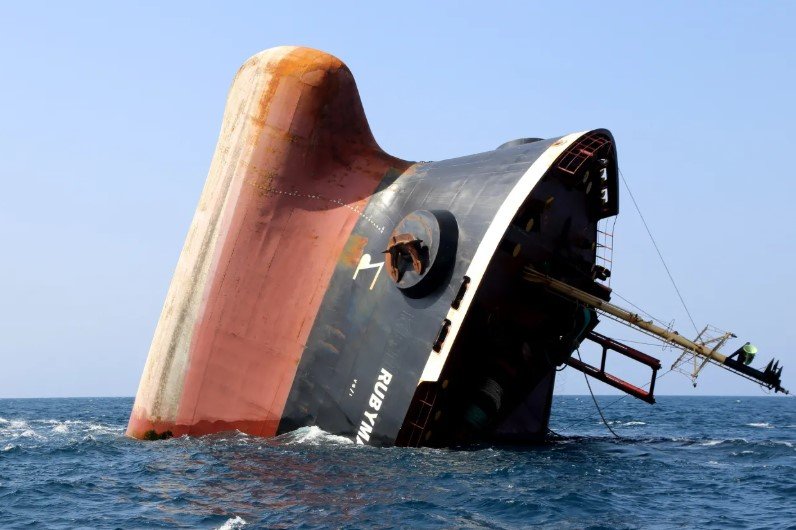Major internet disruptions have struck several countries in Asia and the Middle East after undersea cables in the Red Sea were damaged on September 7, 2025. Experts point to the cuts near Jeddah, Saudi Arabia, as the cause, leading to slower speeds and outages that affect millions of users and businesses.
What Led to the Cable Damage
The incident unfolded over the weekend, with reports emerging on September 7, 2025, about multiple fiber optic cables being severed in the Red Sea. This vital waterway carries a large share of global data traffic between Europe, Asia, and Africa.
Monitoring groups quickly detected the issues, noting that about 25 percent of the usual data flow through the region was impacted. This echoes a similar event in 2024, when cables were cut amid regional conflicts, but the 2025 damage appears more widespread based on initial assessments.
While the exact reason for the cuts remains unknown, some analysts link it to ongoing tensions in the area. The Red Sea has seen increased ship attacks by Houthi rebels from Yemen since late 2023, tied to the Israel-Gaza war. These attacks have sunk ships and disrupted trade routes, raising fears that undersea infrastructure could be targeted next.
Investigations are underway, with telecom firms working alongside governments to pinpoint the cause. No group has claimed responsibility yet, but experts warn that accidental damage from ship anchors or deliberate acts are both possible.

Regions Hit Hardest by Disruptions
Countries across South Asia and the Middle East reported the most severe effects starting late on September 7, 2025. India and Pakistan saw widespread slowdowns, with users facing delays in streaming, online banking, and remote work.
In the United Arab Emirates, major providers like Etisalat and Du experienced outages, frustrating residents and businesses alike. Similar issues popped up in Saudi Arabia, Kuwait, and parts of East Africa, where internet speeds dropped sharply.
- India: Social media and e-commerce platforms lagged, affecting millions during peak hours.
- Pakistan: Online education and freelance work took a hit, with some areas losing connectivity entirely.
- UAE: Business hubs in Dubai reported higher latency for cloud services.
These disruptions highlight how reliant modern economies are on a handful of undersea cables. Rerouting traffic has helped in some cases, but full recovery could take days or weeks.
Experts estimate that the outages could cost businesses millions in lost productivity. For everyday users, it means interrupted video calls, delayed emails, and frustration during a time when digital access is essential.
Tech Giants Respond to the Crisis
Microsoft was among the first to alert users on September 7, 2025, warning of increased latency for its Azure cloud platform. The company stated that traffic is being redirected through unaffected routes to minimize downtime.
Other tech firms, including Google and Amazon, have not reported major issues yet, but they are monitoring the situation closely. Azure, as the second-largest cloud service globally, serves countless enterprises, so the ripple effects are significant.
Repair efforts involve specialized ships that can locate and fix the damaged cables. These operations are complex and costly, often taking several days in calm conditions. Teams from affected countries are coordinating to speed up the process.
In the meantime, some providers are boosting capacity on alternative paths through the Mediterranean and Indian Ocean. This quick thinking has kept critical services online, but users should expect ongoing hiccups until repairs finish.
Potential Causes and Security Concerns
Speculation swirls around the role of Yemen’s Houthi rebels, who have ramped up attacks in the Red Sea since the Israel-Hamas conflict intensified in 2023. Over 100 ships have been targeted, with several sunk and lives lost, including incidents in July 2025 that claimed four sailors.
While the Houthis denied involvement in the 2024 cable cuts, suspicions linger for this event. Analysts note that the damage occurred in a high-risk zone, where navigation errors or sabotage could happen easily.
| Key Facts on Red Sea Cable Disruptions | Details |
|---|---|
| Date of Incident | September 7, 2025 |
| Location | Near Jeddah, Saudi Arabia |
| Affected Cables | Multiple fiber optic lines |
| Estimated Data Impact | Up to 25% of Asia-Europe traffic |
| Suspected Causes | Possible ship damage or sabotage |
| Recovery Timeline | Days to weeks |
Global leaders are calling for better protection of undersea infrastructure. This includes international agreements to safeguard cables, which carry over 95 percent of the world’s internet data.
The event ties into broader geopolitical strains, such as stalled talks on Iran’s nuclear program. If deliberate, it could escalate tensions further, prompting stronger naval patrols in the region.
Economic and Global Ripple Effects
The outages come at a tough time for economies still recovering from recent global events. In India, where digital services drive growth, the slowdowns could dent e-commerce sales during the busy fall season.
Pakistan’s tech sector, a key employer, faces challenges as remote workers struggle with unreliable connections. In the Middle East, oil and finance industries rely on fast data links, so any prolonged issues could have wider financial fallout.
On a global scale, this reminds us of vulnerabilities in the digital supply chain. Past disruptions, like the 2021 Suez Canal blockage, showed how one event can halt trade and data flow.
Looking ahead, experts predict more investments in redundant cable systems. Countries are exploring satellite options, such as Starlink, to provide backup during crises.
Steps Forward and Lessons Learned
Repair teams aim to restore full service by mid-September 2025, but users are advised to use VPNs or limit high-bandwidth activities in the interim. Governments are stepping up to offer support, including free data boosts in some areas.
This incident underscores the need for diverse routing and stronger international cooperation. As digital dependence grows, protecting these hidden lifelines becomes crucial.
What do you think about these disruptions? Share your experiences in the comments and spread the word to keep others informed.








